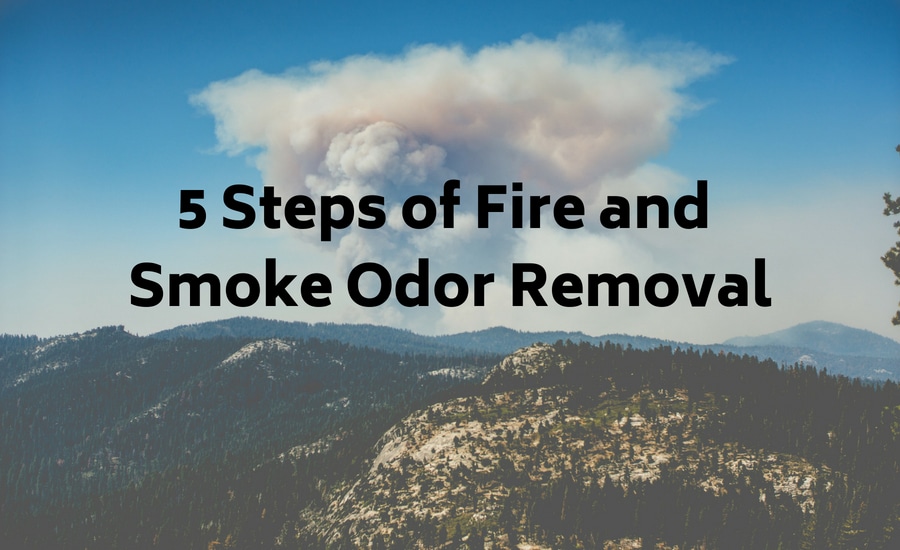5 Steps of Fire and Smoke Odor Removal

Odor removal is one of the more subjective parts of restoration and remediation work. What one person smells, another may not. What is offensive-smelling to one person, may smell sweet as roses to someone else (anyone want to talk about the smell of diesel fumes?!). All of this is why most restoration companies today no longer try to mask odors. Instead, complete odor removal is the goal – but how do you know the odor is gone when everyone’s senses are different? This all comes down to the science of smells. They key is to determine the source of the odor, then go from there.
When it comes to fire and smoke damage restoration, the source is usually pretty obvious – but without thorough cleaning, odors can linger and be trapped in tricky and hidden areas that were missed during the cleaning process. Plus, while one person in the home may adapt to any residual odor, the lingering smells could really irritate someone else.
There are a lot of articles in R&R that walk through the key steps of fire and smoke odor removal. In this article, we are going to break it down into five basic steps that are a combination of the wide range of expertise from various contributors and industry experts.
Step 1: Remove anything with visible smoke damage. Obviously, anything with smoke damage is probably going to be holding on to some odors.
Step 2:Clean everything. Every square inch – both the structure and the contents. There are case studies of odor removal being done in homes of hoarders, but the contents left untouched. Weeks after the odor removal is believed to be complete, the odor comes returns because it still exists within all the contents in the space. Microfiber cloths and cotton swabs are great for the cleaning process itself, and ensuring you’ve gotten rid of any lingering residue.
Step 3: Run your odor removal equipment. Depending on your equipment, preferences, and safety concerns, they can start running while crews are working on cleaning the structure – or be run during hours when the home or business is empty.
Step 4: Consider sealing any porous surfaces that may have absorbed the smoke odor – like unfinished, raw wood.
Step 5: Odor check! Do you smell anything? Do others smell anything they shouldn’t? If any odor lingers, go back to step two and repeat back to this step. Repeat steps two, three, and four as many times as needed until no smoke odor is detected.
There are some other things to take into consideration as you clean. Think about environmental conditions. Following the California wildfires, rainstorms kicked up smoke odors from the charred ground. The same goes for building materials and contents. Warmer, wet or humid weather will allow any odors trapped in building materials to escape and might therefore require you to do the project all over again. The biggest key to successful odor remediation is thoroughness and not skipping steps.
Source: The Institute of Inspection Cleaning and Restoration Certification (IICRC); written by Michelle Blevin.
Call Aspen Environmental Services for fire and water damage cleanup, mold testing, mold removal, or air duct cleaning!
Aspen Environmental professionals are licensed and insured and members of the National Organization of Remediators and Mold Inspectors (NORMI), the
National Air Duct Cleaners Association (NADCA), and the Institute of Inspection Cleaning and Restoration Certification (IICRC).
Contact Aspen for anything related to water damage cleanup, mold testing, mold removal, or air ducts: Call 978.328.0882 or email [email protected].




